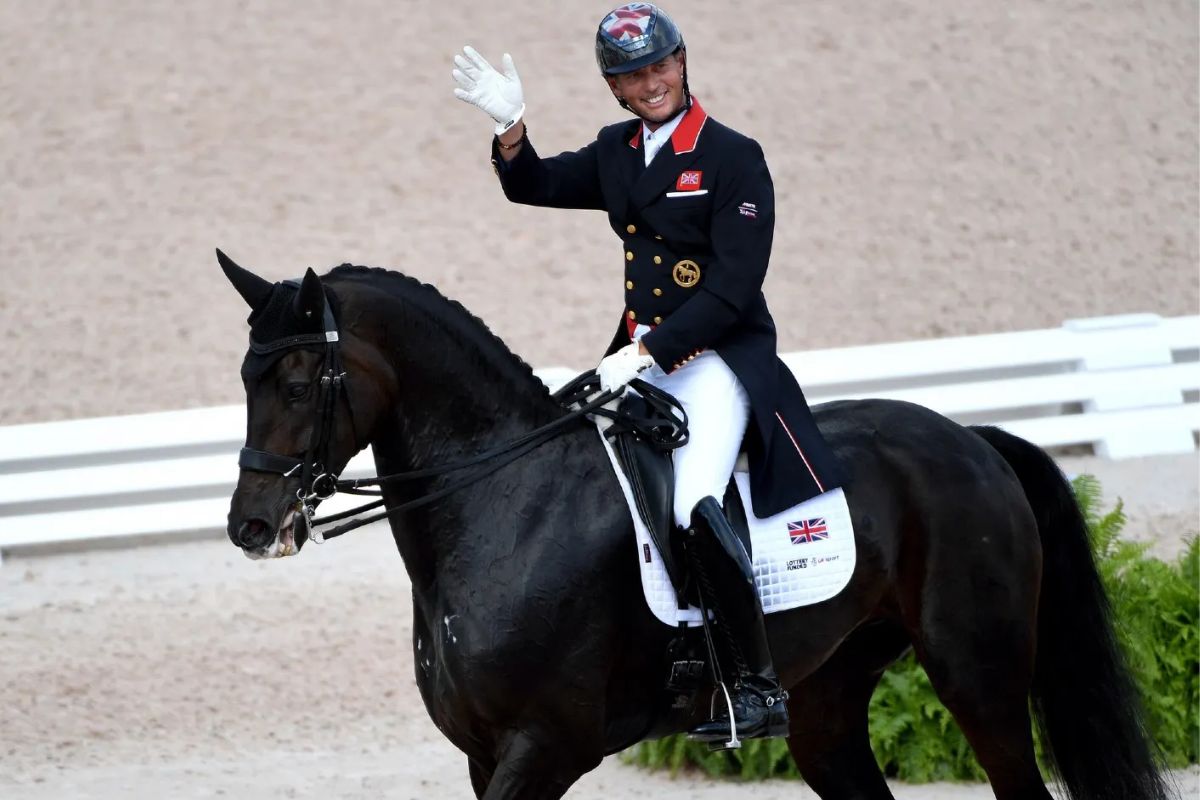Menu

While Carl Hester may not have invented his own training system, there are a number of valuable training tips, strategies, and philosophies from the five-time Olympic champion and world-class rider that we've chosen to share here. So read on and become wiser about the master's methods.
"I haven't invented my own training system. Everyone's system builds on other people's systems, and I've been fortunate to learn from many great riders throughout the ages. Over time, you just learn to develop what works for you."
Carl Hester to Dressage Today.com
If you don't have the opportunity to buy a brilliant horse, buy what you can afford, even if it's a 2-year old. After achieving international success, I thought I would have Grand Prix horses readily available. But no. So I bought what I could afford. In addition, get yourself a good trainer, which is a more important investment in the long run than the money you put into a horse. The best riders always have many horses, and they get inspiration and regular training. An expensive horse is not a prerequisite for you to ride, but teaching and learning is!
Read more: Leg mover vs. back mover – what does that mean?
After the London Olympics, I was asked if our success was due to turning our horses out to pasture. No, it's the whole package! It's the combination of riding, training, horsemanship, and our approach to our horses that is the reason. We ensure that our horses move and get a chance to see things other than a riding arena.
One needs to acquire knowledge about horse welfare and wellbeing. It's one thing to be a good rider, but it's far more interesting to see what else a rider knows. The more you read, and the more you can put other people's practices into action, the more interesting and satisfying your riding becomes. It is important to learn about horse care, training, biomechanics, welfare, and much more for the horse to thrive.
We will always have to deal with the horse's asymmetry or our own. You don't solve the problem by looking down to one side. You should look up and out through the horse's ear to tackle any asymmetries. After all, the judges don't sit on the horse's neck or on your hands. They sit in front of you and the horse, and that's where you should look.
Often a rider's right hand does not match his or her left hand. It helps to look at your hands and see what they're doing. People have habits that are so ingrained that they feel normal, but that doesn't mean they can't be changed. I have students who ask me: "How do I improve my hands?" Even Charlotte Dujardin knows that she can have problems with her hands and she works to improve them. You can always get better over a long period, so don't take it personally if your trainer says the same thing every time.
It's not just the horse that needs to be balanced - the rider needs to be too. Many riders have their shoulders behind their hips, and I tell them, "If you were a horse, you would have a swayback right now." Sitting on a horse is more about sitting upright in the saddle than throwing the upper body back.
Also be aware of your weight distribution in the upward transitions. In forward transitions to canter, for example, you should go a little bit forward with the upper body so that your horse does not have to also lift you with its back. Otherwise, the horse's front and hind parts separate in the transition. When you want to return to trot, the horse should be forward-seeking with its nose and head in front of the vertical. In other words, you should stop the horse from the back and not from the front. Generally, when you ask your horse to go forward, the upper body should go forward too. When you want to go back, you should also bring your upper body back.
When you ride deep, your upper body should stretch up through your head, and your lower body should be pulled down towards your feet. Sitting deep can be hard, so feel free to ride light in intervals if you need to catch your breath. You can certainly do collection exercises, such as tempo changes, oversteps, etc. in light seat and switch to deep seat when your horse relaxes. Riding light in passage is something I do a lot to ease the work for my horses and to get more expression and lift in the hind legs.
The 20-meter circle. Make as many transitions as you can on 20-meter circles. How many? Hundreds. The more transitions, the more obedience, suppleness, and elasticity. What else do horses learn on 20-meter circles? They learn to turn without aids. They learn to make their transitions from behind, not from the front.
This is a vital part of the work at all levels. Young horses find their balance in stretching exercises, and they learn basic self-carriage. It's important that riders don't pull the horse's head down or keep it down. It must come entirely naturally from the horse itself. The same applies to relaxation. You can't force a horse to relax. You need to help it. When you work on a circle and make transitions, it helps the horse to be relaxed and responsive. The horse needs you to help unlock it so it can relax.
Read also: Part 2: Can you do dressage on an Icelandic horse? Nils Christian Larsen clarifies the myth
We hope you can use some of these tips from Carl Hester in your own riding.